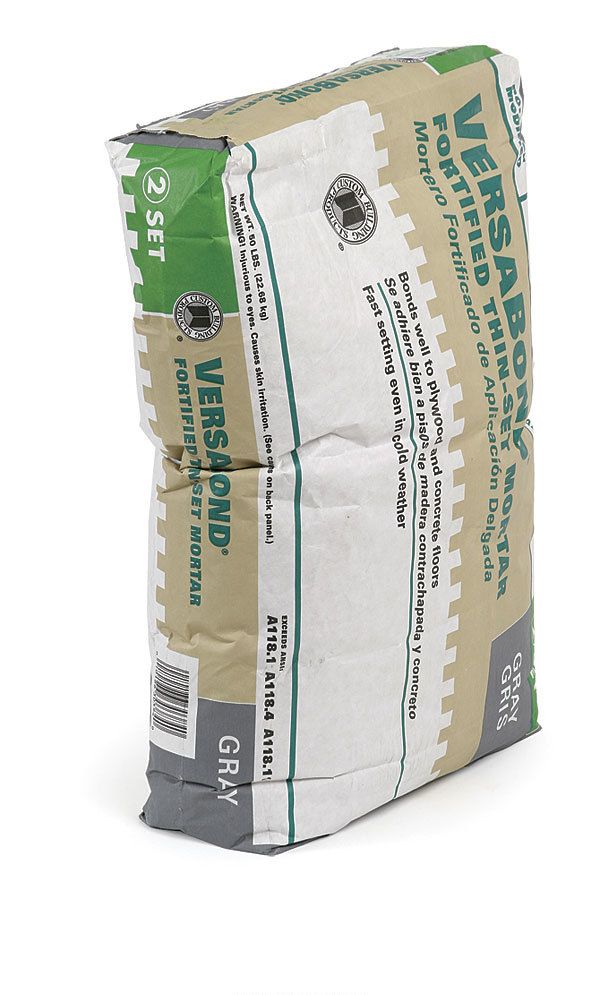Tile Thinset Mortar Options
Check with the ANSI standards when choosing a tile adhesive.

The most common adhesive for setting tiles is thinset mortar—that is, mortar designed to be applied in a layer no more than 3⁄16 in. thick. Most of these mortars are available in either gray or white. If you intend to use a dark-colored grout, choose a gray mortar; choose white if your grout will be a light color. Achieving a white color requires modifications in the manufacturing process, so expect to pay a few more dollars for white mortar than gray.
Not all thinsets are the same, and the one to use depends on the location of the surface to be tiled and the nature of the substrate. When deciding which thinset to use, best practice is to look for the American National Standards Institute’s (ANSI) approval for each product. Within the three common categories shown here, most manufacturers offer a range of products that differ in grade, curing time, composition, and price.
A118.1: Mortars meeting this standard contain only portland cement, sand, and a water-retention compound. After being mixed with water, they can be used on basic tile jobs over concrete, drywall, or cement backerboard. They don’t adhere to wood when dry, so they should not be used over plywood. These thinset mortars are called nonmodified.
A118.4: To meet this standard, thinsets must include a latex polymer. You can either buy a mortar that includes this polymer, or you can buy a nonmodified mortar and stir in a liquid latex additive in place of the water. The latex allows a small degree of movement in the substrate, and mortars that include it are ideal in exterior locations, in wet areas, in high-traffic areas, and over vinyl flooring. These modified thinset mortars also meet A118.1.
or unmodified
A118.11: Mortars with the ability to adhere tiles to exterior-grade plywood meet this standard, as well as A118.1 and A118.4. Again, you can either buy a thinset that meets this standard, or you can buy a nonmodified thinset and mix in a latex additive. A118.4: To meet this standard, thinsets must include a latex polymer. You can either buy a mortar that includes this polymer, or you can buy a nonmodified mortar and stir in a liquid latex additive in place of the water. The latex allows a small degree of movement in the substrate, and mortars that include it are ideal in exterior locations, in wet areas, in high-traffic areas, and over vinyl flooring. These modified thinset mortars also meet A118.1.
Photo: Rodney Diaz





